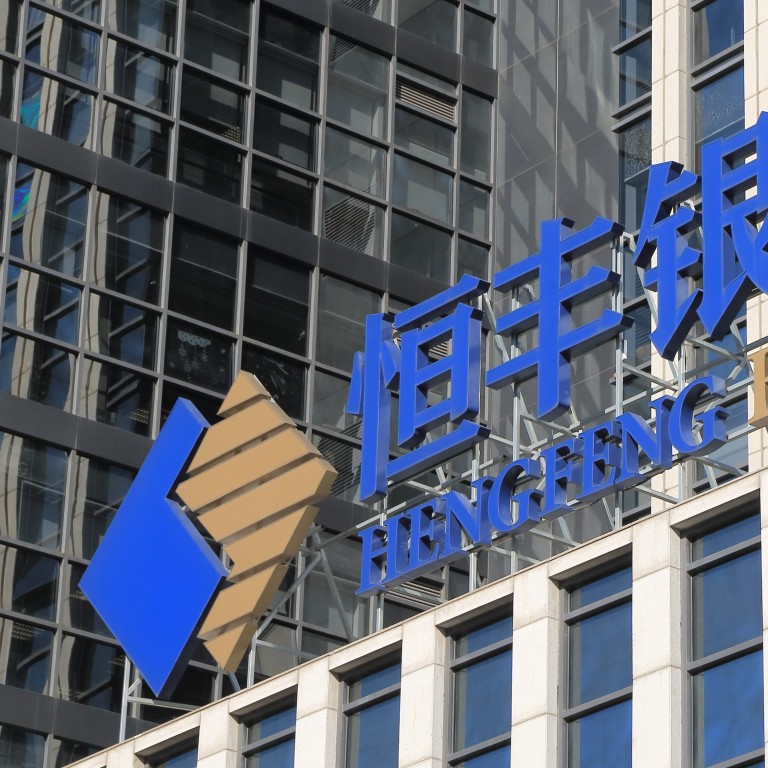
China sovereign fund, Singapore’s UOB join US$14 billion bailout plan for troubled Chinese lender
- Hengfeng Bank in Shandong province is the third lender to be seized by the government since May
- China’s sovereign fund will inject 60 per cent of the bailout capital through share purchase to keep the lender afloat
China’s sovereign wealth fund and Singapore’s third-largest lender are joining a group of investors to inject US$14 billion of capital to bail out a Shandong province-based lender as more cracks emerged among smaller lenders in the world’s second largest economy.
Hengfeng Bank, which has not produced its accounts since 2016, is seeking to sell 100 billion new shares through a private share placement to state and foreign investors, without disclosing the issue price.
Central Huijin Investment, a unit of China Investment Corporation, will inject 60 per cent of the capital while the provincial asset management arm will provide 36 per cent and United Overseas Bank 1.86 per cent. The troubled lender is seeking 100 billion yuan by selling shares at 1 yuan a piece, according to a UOB statement.
The stock placement came after the government took over the lender in August, making it the third bank seizure since May, as regulators took a stronger approach to expose and crack down on financial risks among debt-laden lenders.
Worries over the health of China’s about 3,000 small lenders, including city commercial and rural banks, mounted this year as they faced increasing competition to attract deposits while corporate borrowers struggled to repay debts amid the slowest economic growth in nearly three decades.
China’s regulators take the scalpel to further downsize the financial empires of oligarchs
Beijing has also tightened its grip over malpractices in an attempt to untangle the complex webs of financial institutions that prop up the business empires of tycoons. The moves have snared tycoons such as Xiao Jianhua, founder of conglomerate Tomorrow Group, and Wu Xiaohui, former chairman of Anbang Insurance Group.
The central bank in May shocked the market when it took over Baoshang Bank, which counts Xiao as a key shareholder, making the first bank seizure in two decades. Xiao left Hong Kong in January 2017 for mainland China, where he is believed to be helping authorities with an investigation to break up his business empire.
Apart from failing to produce its annual reports in 2017 and 2018, Hengfeng Bank’s two former chairmen were investigated in 2014 and 2017 separately, before they were charged with corruption involving 750 million yuan and 1.2 billion yuan respectively, according to local media reports.
China’s troubled banks ‘engaged in blind expansion’ but financial stability remains solid, PBOC says
Many of China’s regional banks have expanded aggressively in recent years and chased risky projects, the country’s central bank governor Yi Gang wrote in an article published in August, in a rare public comment on this topic.
“These [troubled] institutions must take the prime responsibility. Their shareholders must be responsible for their actions, while large creditors must also have the ability to identify risks,” he wrote.

